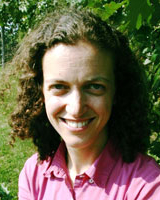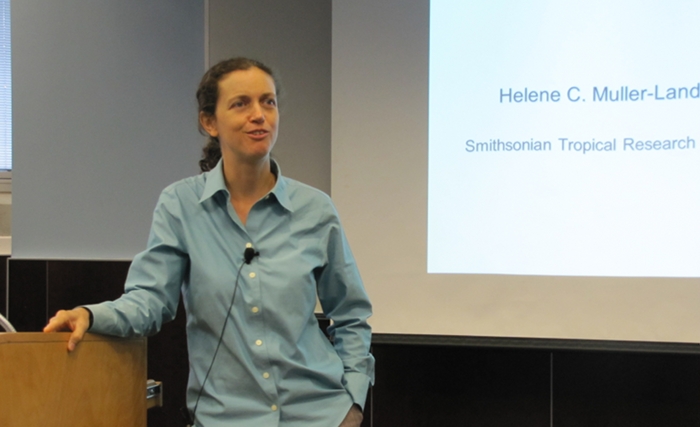NIMBioS Seminar Series
In conjunction with the interdisciplinary activities of the National Institute for Mathematical and Biological Synthesis (NIMBioS), a seminar series on topics in mathematical biology will be hosted at NIMBioS every other Tuesday at 3:30 p.m. (unless otherwise noted) in the Hallam Auditorium, Room 206, Claxton Building, 1122 Volunteer Blvd. Seminar speakers will focus on their research initiatives at the interface of mathematics and many areas of the life sciences. Light refreshments will be served in the 1st floor visitor breakroom beginning 30 minutes before each talk. Faculty and students from across the UT community are welcome to join us.

Time/Date: Tuesday, January 29, 2013, 3:30 p.m.*
Location:
Room 206, Claxton Building, 1122 Volunteer Blvd.
Speaker:
Dr. Helene Muller-Landau, Lead Scientist of CTFS Global Forest Carbon Research Initiative, Smithsonian Tropical Research Institute; NIMBioS Postdoctoral Fellows Invited Distinguished Visitor
Topic:
Species coexistence and spatial patterns in plant communities
Abstract:
Two applications of ecological theory to investigate variation in plant communities will be presented. (1) Seed size commonly varies by several orders of magnitude among coexisting plant species, a pattern ecologists have long sought to explain. Previous explanations have focused on either a balance between seed size and per-seed success in and of itself, or on a competition-colonization tradeoff. However, neither of these explanations is consistent with empirical data, including data from the tropical forest on Barro Colorado Island, Panama. I present an analytically tractable alternative model, the tolerance-fecundity tradeoff, in which the higher seed number of small-seeded species trades off against a higher stress-tolerance of large-seeded species and mediates coexistence in the presence of habitat heterogeneity in site stressfulness. (2) Nonrandom spatial patterns are ubiquitous in ecological communities and often reflect a multiplicity of processes acting over a wide range of scales. I show how a new method, developed with Matteo Detto, uses the scale-wise variance (wavelet variance) to disentangle the signatures of processes acting at different and similar scales on observed patterns. These methods, together with exact and approximate (moment closure-based) analytical solutions for the expected scale-wise variance under different individual-based, spatially explicit models, make it possible to estimate process parameters from spatial patterns. The methods are demonstrated through numerical examples and case studies of tropical tree species.
*Join us for refreshments at 3 p.m. in the 1st floor visitor breakroom.
Seminar Flyer (pdf)
For more information about this and other NIMBioS Seminars, visit /seminars.

NIMBioS
1122 Volunteer Blvd., Suite 106
University of Tennessee
Knoxville,
TN 37996-3410
PH: (865) 974-9334
FAX: (865) 974-9461
Contact NIMBioS


